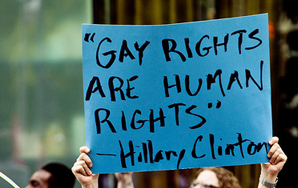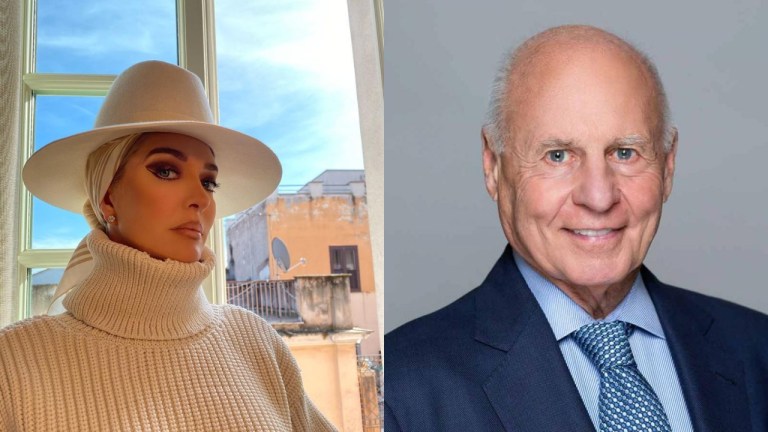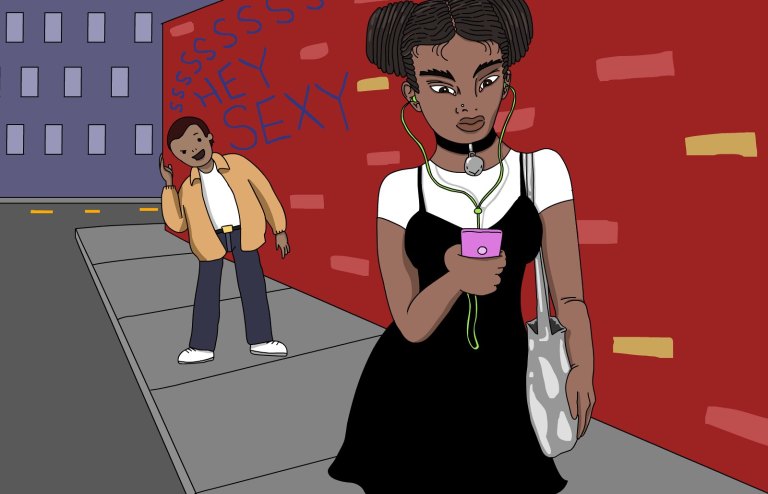Here’s What The DOMA And Proposition 8 SCOTUS Decisions Really Mean
Same-sex couples in a state that bans same sex marriage could bring a constitutional challenge, citing the Court’s equal protection arguments and heavier scrutinizing of sexual orientation-based differentiations in a state’s domestic relations laws.
By Jayne Ricco

This is about to get legal jargon heavy, so I apologize in advance, because speaking from personal experience I know it can be enough to make you want to poke your own eyeballs out. But there have been a lot of incorrect explanations thrown around about SCOTUS’ decisions on both DOMA and Proposition 8. If we want to continue to fight for marriage equality, it’s important to understand the legal analyses at play, as well as their practical implications.
DOMA
In a 5-4 ruling in United States v. Windsor, the Court struck down the provision of DOMA that denied federal benefits to same-sex couples who were legally married in their state(s) of residence. In holding that this provision of DOMA violated the Federal Constitution, the Court noted that it deprived legally married same-sex couples of their liberty without due process of law, and further deprived them of equal protection under the law, in violation of the 5th amendment. It’s important to note that “law” in this case means “state law,” not federal law, since there is no federal legal framework for what does or does not constitute a legal marriage; domestic relations, such as marriage, custody, and child support are consistently left to the States to regulate.
Essentially, the Court’s holding is constitutional speak for: The State of New York says this same-sex couple is legally married, so the Federal government cannot pass a law to take away that designation for purposes of federal benefits for married couples; to do so violates their due process and strips them of equal protection of the law. If the Federal Government is going to give credence to legal marriages in a state when bestowing federal benefits, it must give credence to all legal marriages in a State, as defined by that State. From the opinion:
“By creating two contradictory marriage regimes within the same State, DOMA forces same-sex couples to live as married for the purpose of state law but unmarried for the purpose of federal law, thus diminishing the stability and predictability of basic personal relations the State has found it proper to acknowledge and protect.”
The Court’s decision contains a lot of language that denounces religious or moral justifications for legislating to the detriment of same-sex couples and creating a second-tier of citizens and marriages, language which at least in part informed its decision. But the ruling also stems from a desire to keep the Federal Government from unjustifiably (read: prejudicially) interfering in matters that have long been the province of the State to regulate. The effect of DOMA was that it essentially rendered legal same-sex marriages null for the purpose of administering and enforcing federal statutes. Ain’t nobody got time for that.
Practically speaking, the ruling means several things. First, it obviously means that any same-sex couple who is legally married may avail themselves of the federal benefits of marriage, which include over 1,000 statutes on matters such as social security benefits and estate tax. It also means that same-sex couples living in a state where their marriage is recognized could move to a state where same-sex marriage is banned and still maintain many marriage benefits (though only federal ones). State benefits are another issue altogether, however, and the DOMA ruling doesn’t mandate that states give blanket “full faith and credit” to same-sex marriages from another state. Perhaps most importantly, given the language in the opinion, same-sex couples in a state that bans same sex marriage could bring a constitutional challenge, citing the Court’s equal protection arguments and heavier scrutinizing of sexual orientation-based differentiations in a state’s domestic relations laws.
It’s important to note, though, that the Court does not say that states may not legislatively ban same sex-marriage. That brings us to the Proposition 8 case.
Proposition 8
This one gets a little trickier, and necessitates a brief rundown of how Proposition 8 made its way to the steps of the Supreme Court.
On March 7, 2000, Proposition 22, a California ballot measure which declared that marriage should remain between opposite sex couples, was approved by 61% of California voters. In December of 2004, a San Francisco state judge heard arguments that this ban on same-sex marriage violated the California Constitution. Governor Schwarzenegger (I can’t even with that) then vetoed a same-sex marriage bill passed by the California legislature, arguing that it wrongly reversed Proposition 22.
On May 15, 2008, the California Supreme Court finally ruled that the state Constitution contained a fundamental “right to marry” and existing bans on same-sex marriage were unconstitutional. In November 2008, Proposition 8, which would again ban same-sex marriage, appeared on the ballot, and passed with a 52% vote. A same-sex couple from California then sued in Federal court, arguing Proposition 8 violated the U.S. Constitution. On August 4, 2010, the Federal District Court ruled that Proposition 8 was unconstitutional.
The U.S. 9th Circuit Court of Appeals upheld the lower court’s ruling, albeit very narrowly, essentially stating that California could not pass a law that deprived California citizens of rights that already belonged to them without sufficient justification (helpful Hint from Heloise: bigotry is not considered sufficient justification). The ruling was limited to the specific facts of the Proposition 8 case, and did not make any sweeping rulings about the legality of state same-sex marriage bans in general.
At that point, it was up to the State of California to step in and defend Proposition 8 and appeal the 9th Circuit’s decision. But both Governor Jerry Brown and Attorney General Kamala Harris declined to defend it, so the original sponsors of Proposition 8 filed the appeal on behalf of the State of California. Here’s where we get to the actual ruling in Proposition 8.
To sum it up, the Supreme Court essentially punted the case based on a jurisdictional question. In law, there is a concept known as “standing.” Standing means (very simplistically) that a party must be able to demonstrate a considerable connection to or harm from a law or challenged action in order to be a party in a resulting case. The Court held that once Proposition 8 passed, its sponsors had “no personal stake in defending its enforcement that is distinguishable from the general interest of every individual in California.” They “answer to no one … have taken no oath of office” and “are plainly not agents of the state,” said Roberts in the majority opinion. The Court noted that never before had it “upheld the standing of a private party to defend the constitutionality of a state statute when state officials have chosen not to,” and declined to do so for the first time in this case.
By finding that the sponsors lacked standing to appeal the rulings, the Supreme Court reinstated the August 2010 decision by then-Chief U.S. District Judge Vaughn Walker of San Francisco that the California measure was an irrational act of discrimination based on sexual orientation and gender.
So, what does that mean? Practically speaking, it means that same-sex marriage can resume in California. That is great news for Californians.
But here’s the problem: Because standing is a threshold question in any federal case, the justices did not reach the plaintiffs’ main argument that Proposition 8 violates constitutional guarantees of equal protection. As I mentioned earlier, while DOMA is a great landmark decision and a step in the right direction, using DOMA’s equal protection arguments to invalidate Proposition 8 on the merits would have been the 1-2 punch necessary to effectively rule that state same-sex marriage bans are unconstitutional.
Instead, we have to wait until another same-sex couple can bring a federal constitutional challenge to a same-sex marriage ban, and hope that the case can get back to the Supreme Court so they can issue a ruling on its constitutionality. In the meantime, we are stuck in a grey area, both legally and morally, where homosexuals and same-sex couples in most states are treated as second-class citizens.
Now I need a drink or 7. ![]()




